If your button is having constraints set from the storyboard as below and you want to change the width of the button, then this answer is helpful.
constraints set from the storyboard
Safe Area.trailing = Button.trailing + 20
Button.leading = Safe Area.leading + 20
Safe Area.bottom = Button.bottom + 20
height = 40
see the image for a better understanding.

Requirement :
if #condition 1 gets satisfied, then change button width to 100 or any width dimension.
else
if #condition 2 gets satisfied, then keep width as it is ( as per given constraints)
To handle this,
- Create an IBOutlet of leading and trailing constraints of that button.
- Set it to inactive.
- Add width anchor for the button programmatically.
Setting it inactive is mandatory because both won't work at the same time, so be careful.
@IBOutlet weak var btnNextTrailingConstraint: NSLayoutConstraint!
@IBOutlet weak var btnNextLeadingConstraint: NSLayoutConstraint!
if (condition1) {
btnNextLeadingConstraint.isActive = false
btnNextTrailingConstraint.isActive = false
btnNext.widthAnchor.constraint(equalToConstant: 100).isActive = true
}
else {
btnNextLeadingConstraint.isActive = true
btnNextTrailingConstraint.isActive = true
}
swift ios autolayout constraints
